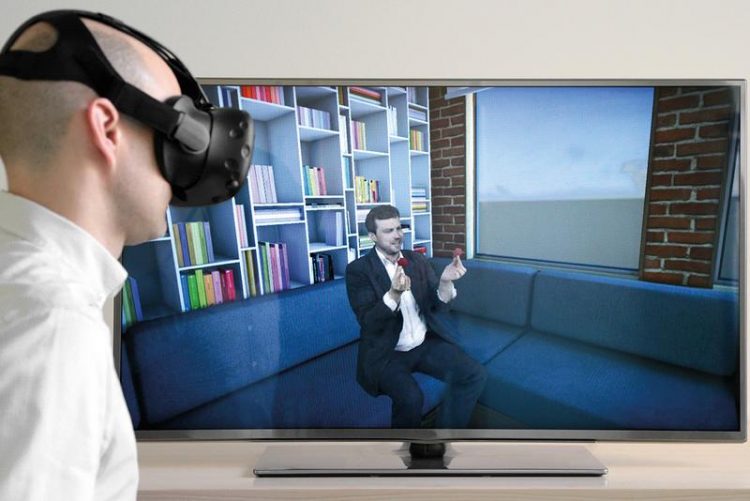Virtual Reality: 3D Human Body Reconstruction from Fraunhofer HHI digitizes Human Beings

Virtual Reality: 3D Human Body Reconstruction from Fraunhofer HHI digitizes Human Beings © Fraunhofer HHI
Fraunhofer HHI researchers have developed a camera system that films people with a perfect three-dimensional impression. The core of this system is a stereo camera: Just as people do it with their two eyes, the camera records the person with two lenses.
This stereoscopic vision results in distances being estimated well, because both eyes look at an object from a slightly different angle. The result is a three-dimensional impression. Recording a person in detail from all directions takes more than one camera.
Fraunhofer HHI is currently using more than 20 stereo cameras to map a human. Each camera only captures a part of the person. The challenge is to merge the individual camera images together so that a realistic overall picture is produced.
The system includes more than just the camera technology. The researchers have developed algorithms that can quickly extract depth information from the stereoscopic camera images. This is necessary in order to calculate the 3D form of a captured person.
The computer calculates a virtual model of the human, which is then transferred into the virtual scene. The cameras perceive the surface shape with many details. In this way even small wrinkles, e.g. on the clothes of the person, can be shown. The model has a natural and realistic appearance.
Showing every gesture
The fusing of the 3D information from the various camera images takes a few seconds. The illusion is perfect, though. The system transmits the three-dimensional dynamic model of a person rapidly into virtual reality. A person can move freely in a dedicated capture area.
The virtual image portrays every gesture and movement realistically. The goal is that in the future a realistic image copy of a human is able to directly interact with the virtual world – for example, to let it grab virtual objects.
In the future, the new camera system is planned to be used for other application fields too. For example, the researchers work on a virtual video conferencing system. It could be used for infotainment applications as well.
Instead of a passive, frontal viewing experience, a television viewer could be directly involved in a movie scene via VR glasses. The viewer would not only see a three-dimensional image of the scene on the television, furthermore he could virtually walk around inside it, and, for example be a part of the adventures of his science fiction heroes.
https://www.hhi.fraunhofer.de/en/events/ifa-2016.html
https://www.hhi.fraunhofer.de/en/events/ibc-2016.html
Media Contact
All latest news from the category: Trade Fair News
Newest articles

Redefining Cancer Science: Rodents, Humans, and the PD-1 Puzzle
Results of a comprehensive analysis refute assumptions that a key immune checkpoint receptor functions the same in rodents and humans The Discovery of PD-1: A Milestone in Cancer Treatment Since…

Heart Surgery Risks: Low BP Linked to Postoperative Kidney Injury
First large cohort study at the Heart and Diabetes Center NRW awarded – Hilke Jung presents research project at the FoRUM conference of the Ruhr University Bochum A working group…

Microbial Secrets: Boost Plant Growth with the Power of Soil Bacteria
To stay healthy, plants balance the energy they put into growing with the amount they use to defend against harmful bacteria. The mechanisms behind this equilibrium have largely remained mysterious….



